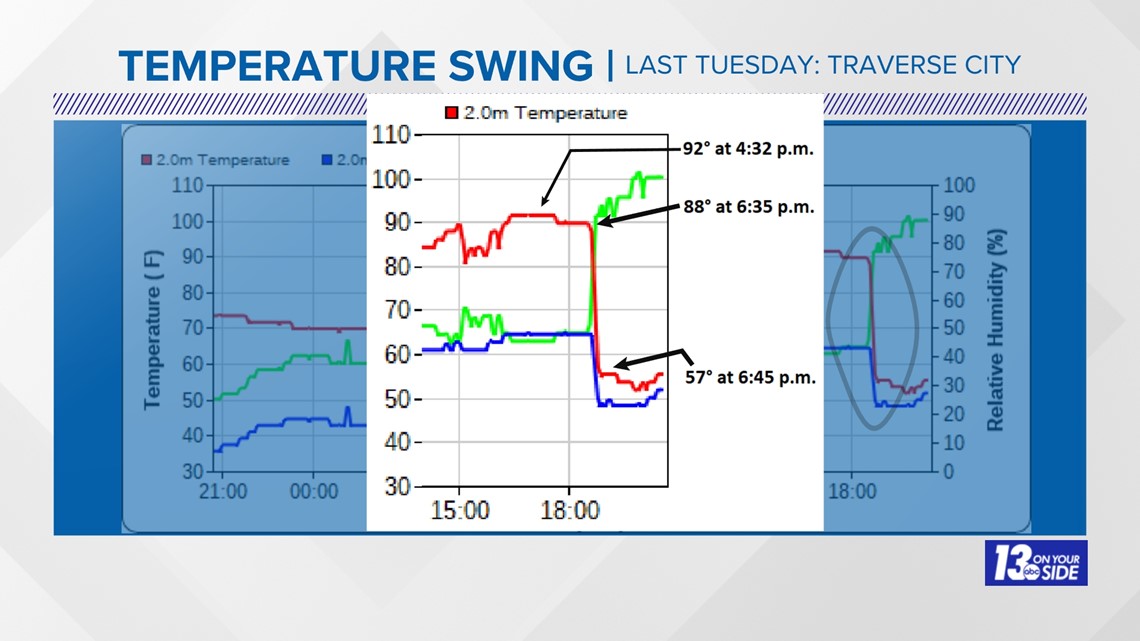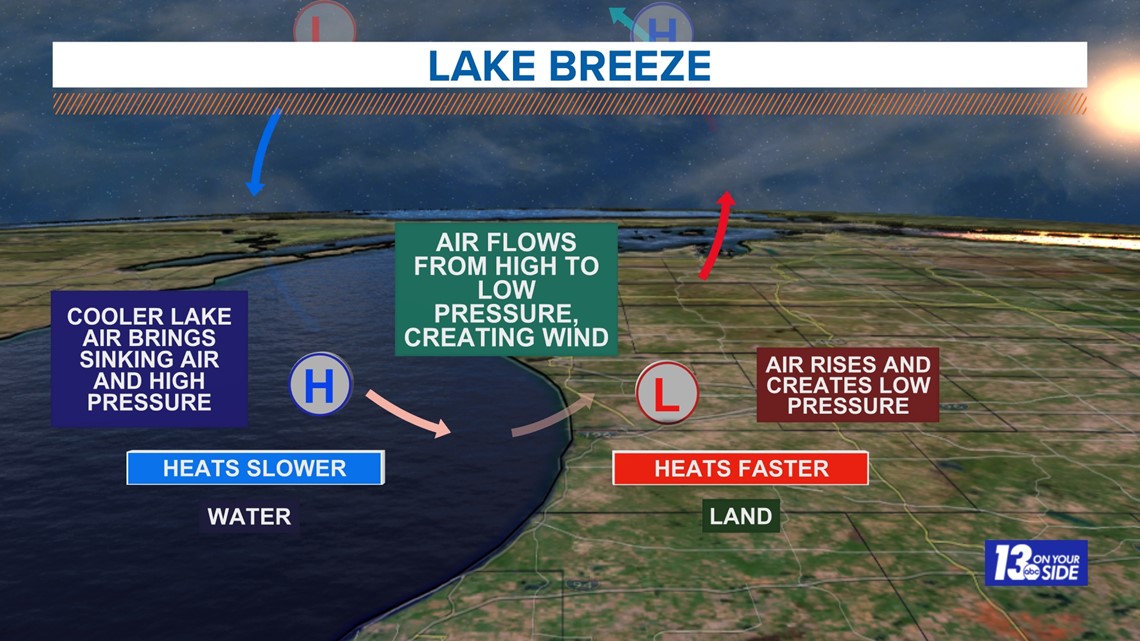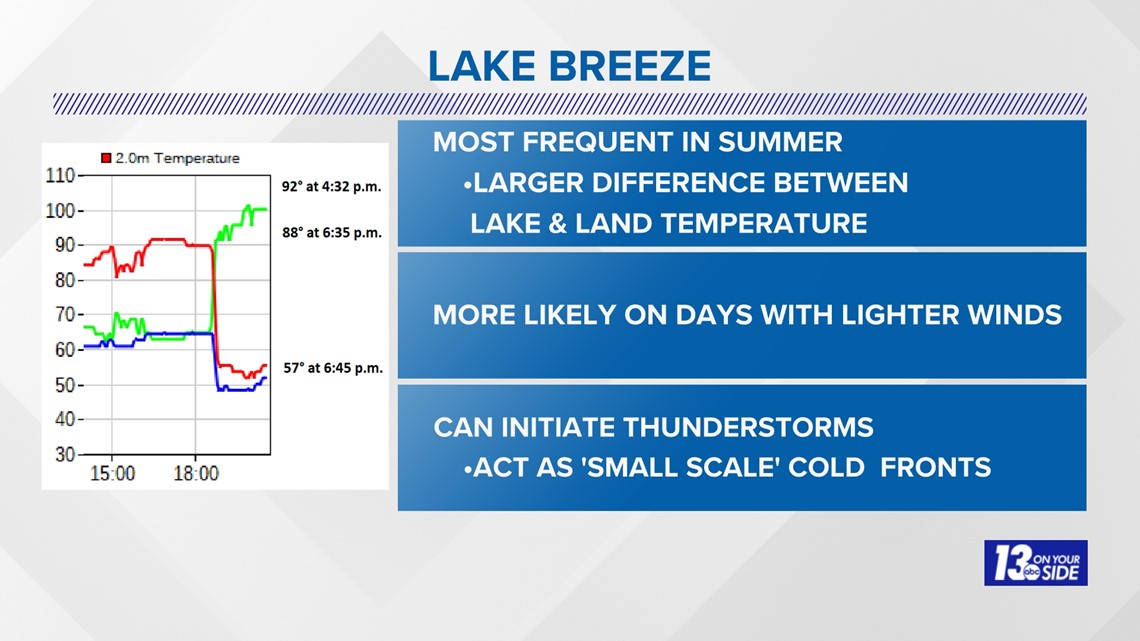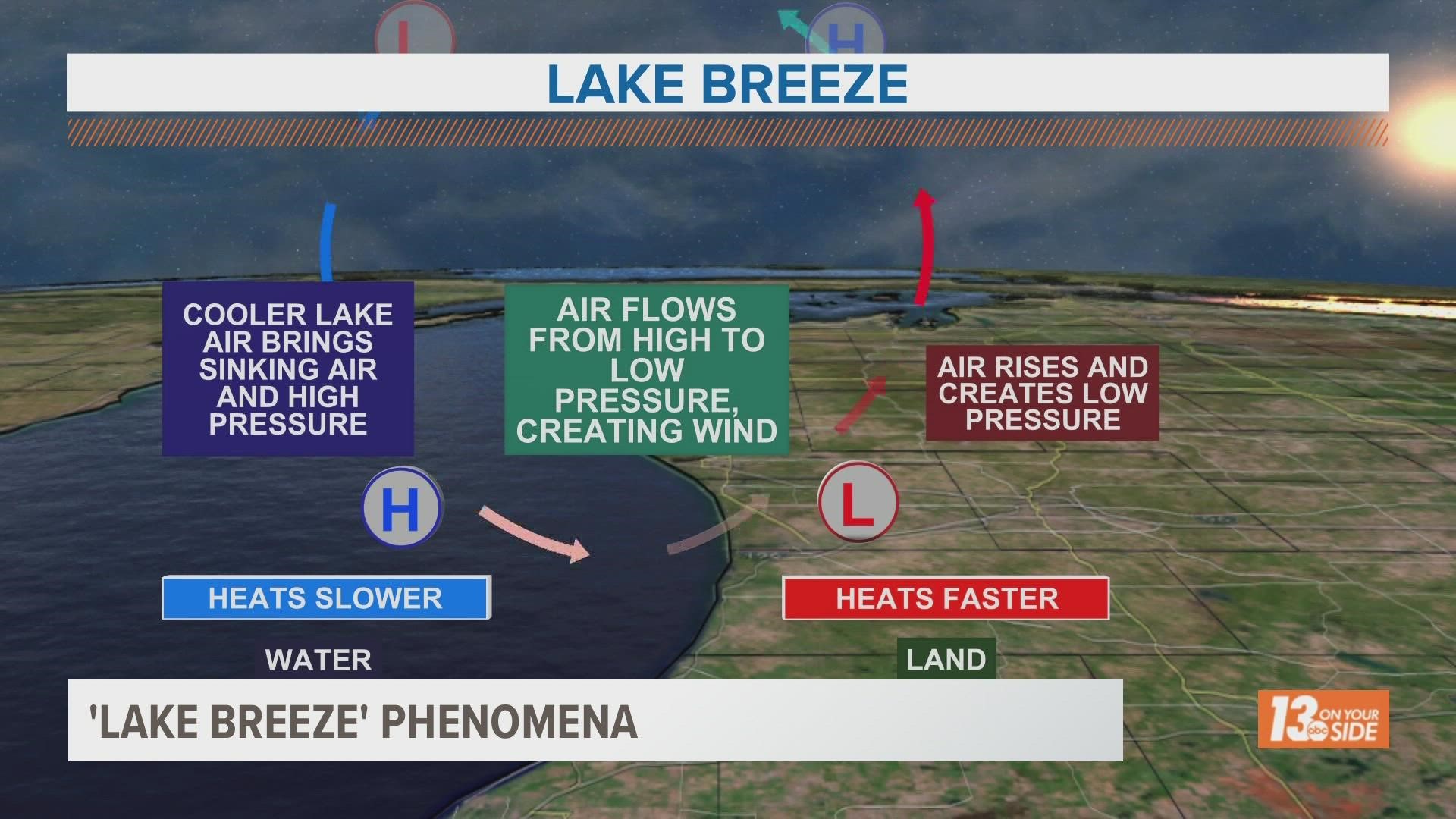MICHIGAN, USA — It’s a staple of West Michigan when the thermometer rises – heading to the beach along Lake Michigan. In addition to swimming, the refreshing breeze present at the lakeshore provides relief from the heat.
In some cases, however, the lake breeze can cause significant temperature swings in only a short period of time. An example of this occurred last Tuesday in Traverse City, with summer heat turning to sweater weather in a matter of minutes.
During the afternoon, Traverse City reached 92°, a new record high temperature for May 10. In the early evening, the temperature at Cherry Capital Airport (roughly one mile to Grand Traverse Bay) dropped 31° in only 10 minutes – from 88° at 6:35 p.m. to 57° at 6:45 p.m.
In those 10 minutes, the wind turned from the southeast to the north, shutting off the warmth of the day and bringing in the colder airmass of Lake Michigan. Last week, water temperatures in northern Lake Michigan sat in the middle to upper 30s.


“So being in the Great Lakes, especially during these transition seasons, like right now we're going into summer, or when we're going into winter, the Great Lakes will have a massive impact on temperatures near the shore,” said Dr. Jason Keeler, an Associate Professor of Meteorology at Central Michigan University. “And that's because the Great Lakes like to hold on to heat. They change temperature much more slowly than land can.”
Lake breezes develop when the land warmer than the water, creating an air pressure difference near the coastline. As the land heats up throughout the daytime hours, the associated warm air rises, creating a localized area of low pressure onshore.
Meanwhile, the cooler airmass that is above the lake surface brings sinking air and a localized area of high pressure offshore. In turn, air flows from high to low pressure, creating wind, which is the lake breeze in this situation.


“As a result, the air right over the lake is quite cool. And so as the day goes on, and the land warms up, you can set up a difference in pressure so that you get an onshore flow called the lake breeze,” Dr. Keeler explains. “And so that lake breeze brought that cool air from over Grand Traverse Bay over Traverse City and resulted in that big temperature drop.”
Besides rapid temperature swings, the lake breeze can aid in thunderstorm development in the Great Lakes region.
“Lake breezes at their leading edge actually have what's called a lake breeze front. This is like a small-scale cold front that can actually help give areas a little bit of lift to help initiate thunderstorms,” Dr. Keeler says.
Like much of weather in Michigan, be prepared for rapid changes, even in minutes of time.


►Make it easy to keep up to date with more stories like this. Download the 13 ON YOUR SIDE app now.
Have a news tip? Email news@13onyourside.com, visit our Facebook page or Twitter. Subscribe to our YouTube channel.

